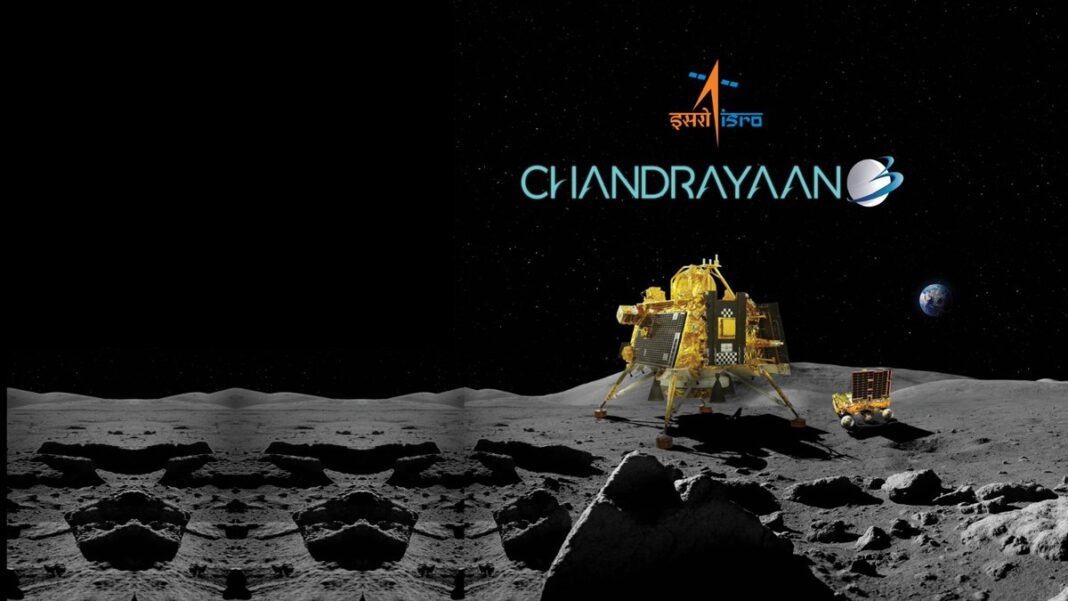Bangalore, August 21: The Indian Space Research Organisation (ISRO) has released new photographs of the Chandrayaan 3 mission’s Vikram lander as it approaches the Moon’s landing location.
ISRO revealed photographs collected by the Lander Hazard Detection and Avoidance Camera (LHDAC) two days before the landing in a post on the microblogging site X.
“During descent, this camera assists in identifying a safe landing area—free of boulders or deep trenches,” ISRO added.
The LHDAC camera was created at the Space Applications Centre (SAC) under the supervision of ISRO.
The importance of the future stages, particularly the powered descent, navigation, and gentle descent to the lunar surface, was emphasised by Dr K Rajeev, Director of the Space Physics Laboratory. “That’s the most crucial phase,” he said.

Dr. Rajeev also discussed the mission’s components, focusing on the lander and rover. The rover is currently housed within the lander and is equipped with two critical payloads: the Alpha Particle Excite Spectrometer (APES) and the Laser-Induced Breakdown Spectroscopy (LIPSE).
These tools are designed to analyse surface composition, providing critical information about lunar minerals such as magnesium, aluminium, iron, and others.
Four critical payloads are operating on the lander. Two are from the Sarabhai Space Center’s Space Physics Laboratory, one is from URSC, and the fourth is a retroreflector built for moon-to-Earth ranging.
Notably, a seismograph contained within these payloads will measure lunar seismic activity, so improving understanding of the moon’s geological processes.
Chandrayaan-3 Mission:
Here are the images of
Lunar far side area
captured by the
Lander Hazard Detection and Avoidance Camera (LHDAC).This camera that assists in locating a safe landing area — without boulders or deep trenches — during the descent is developed by ISRO… pic.twitter.com/rwWhrNFhHB
— ISRO (@isro) August 21, 2023
Rambha LP (Lemur Pro) will analyse plasma density in the lunar environment, making an important contribution to physics. ChaSTE (Chandra’s Surface Thermophysical Experiment) is tasked with measuring the thermal conductivity of lunar regolith, which is critical for future space base building.
ES Padma Kumar, Director of ISRO’s Internal System Unit (IISU), described the pre-landing period of Chandrayaan 3.
“The spacecraft is now orbiting at approximately 110 x 25 km. It will then begin its descent, which is expected to take 15 to 16 minutes. According to ISRO’s plans, the fall will commence on Wednesday,” Kumar said.
Kumar emphasised the need of trajectory adherence for a smooth landing. Scientists, space enthusiasts, and the worldwide community are growing increasingly excited as ISRO approaches the lunar surface.





